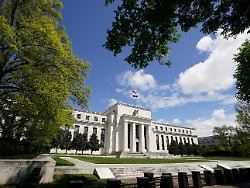Friday, August 27, 2021
“It might be appropriate”
Powell promises entry into the exit
The financial markets are looking with excitement at Fed Chairman Powell’s speech on the progress of bond purchases. The powerful central banker promises nothing – and does not rule out anything. When it comes to inflation, too, it is important not to rush into anything.
The US Federal Reserve Chairman Jerome Powell has announced the beginning of the exit from the monthly aid billions this year. “It might be appropriate to start tapering this year,” he said at the Jackson Hole Fed conference. At the same time, he explained in more detail why he expects the recent surge in inflation to subside over time.
The central bank cut its key interest rate to near zero when the pandemic hit the US economy in March 2020 and has been buying government bonds and mortgage securities for $ 120 billion a month since then to provide additional stimulus.
The surge in infections due to the delta variant has complicated the economic outlook. The risk of a more pronounced economic slowdown increased precisely at the point in time when some monetary watchdogs were ready to reduce the pace of monthly bond purchases, also known as tapering in technical jargon.
The next Fed meeting will be on September 21-22, and several Fed officials have said they are in favor of reducing bond purchases shortly after this meeting if the latest streak of strong job data continues.
Powell’s remarks did not indicate when the process is likely to begin, suggesting that the tapering is unlikely to happen until the next meeting in early November.
Do not rush
Powell used most of his much-anticipated speech to explain why he remains confident that this year’s inflation spurt will prove temporary and why it is so important for the Fed to make that decision right.
He referred to a historical record that goes back to the 1950s and that “teaches monetary policy makers not to try to offset the likely temporary fluctuations in inflation”. He went on to say, “Indeed, a reaction can do more harm than good, especially at a time when interest rates are being set closer to zero.”
Since it could take up to a year for monetary policy decisions to have an impact on the economy, tightening monetary policy runs the risk of a poorly timed move unnecessarily weakening the economy. This could lead to fewer new hires and too low inflation, he said. “Today, when the labor market is still in a significant slump and the pandemic continues, such a mistake could be particularly damaging.”
“A lot of noise about nothing”
For Christoph Balz from Coba, Powell has continued the communication policy of the past few weeks. “We still expect the Fed to decide to cut bond purchases in the fourth quarter.” Christoph Kutz from DZ Bank sees it similarly. The market could prepare for the “reduction in quantitative easing, which we believe will begin at the end of the year. Uncertainty remains low. Massive market reactions are not to be expected.”
“Much ado about nothing,” is how Otmar Lang from Targobank sums up the expectations of the speech. “It has long been clear that the Fed would cut its bond purchases this year. When it starts is not really relevant,” he says. “Nonetheless, Powell should be more specific about the scope and speed of the tapering by the September Fed meeting at the latest.”
Elmar Völker from LBBW also discovered little new in his speech. At the same time, in his eyes, the central bank tried to dispel speculation “that the ‘tapering’ could also be followed by a key interest rate reversal in the near future”. This should calm the financial markets. In addition, “Powell is keeping a back door open with reference to the steep rise in corona infections in the USA”.
.
